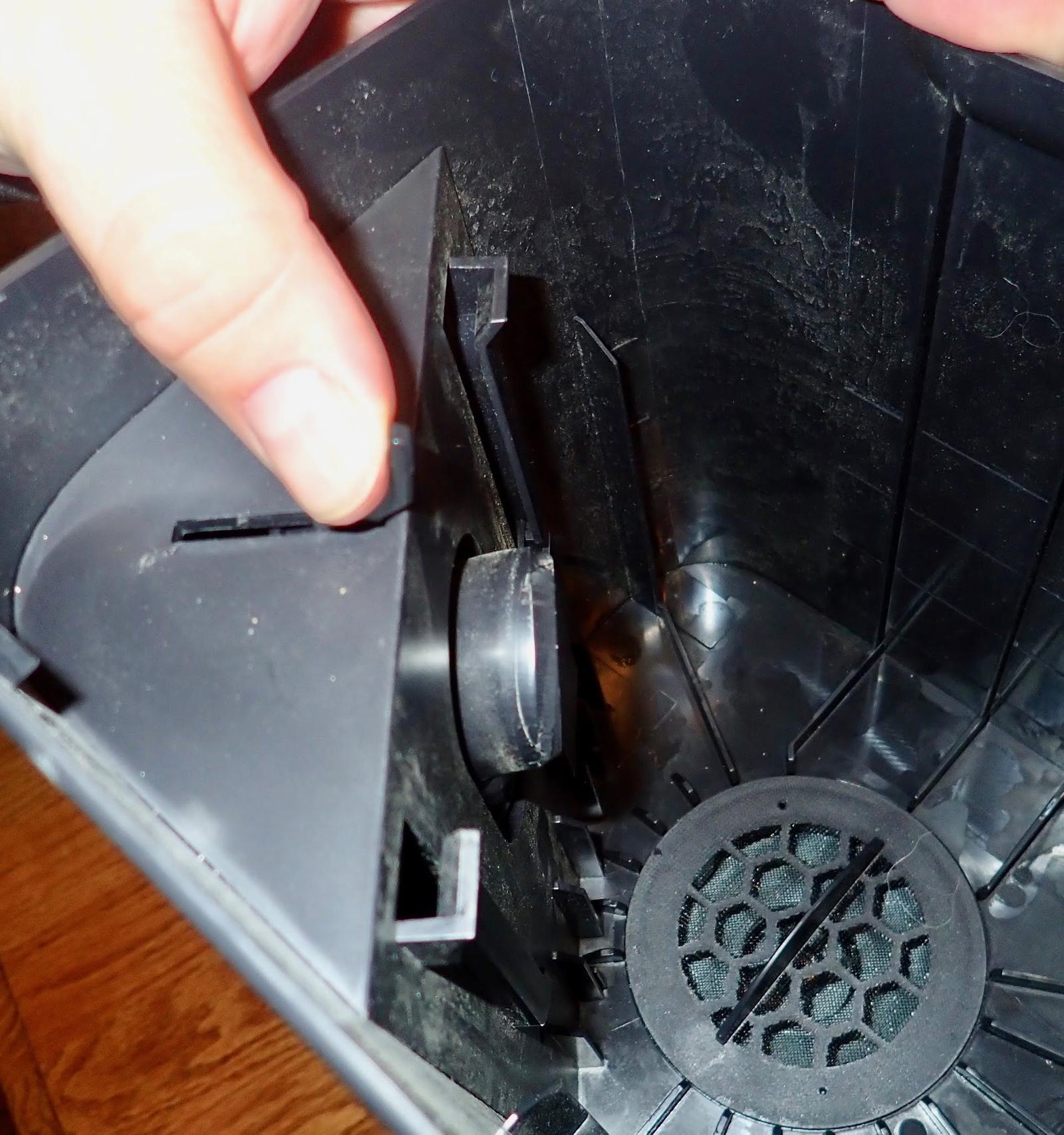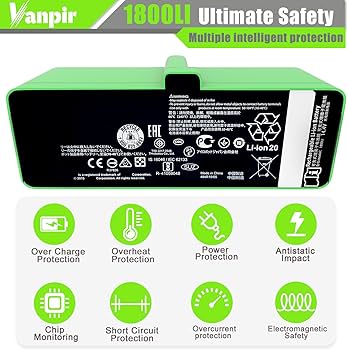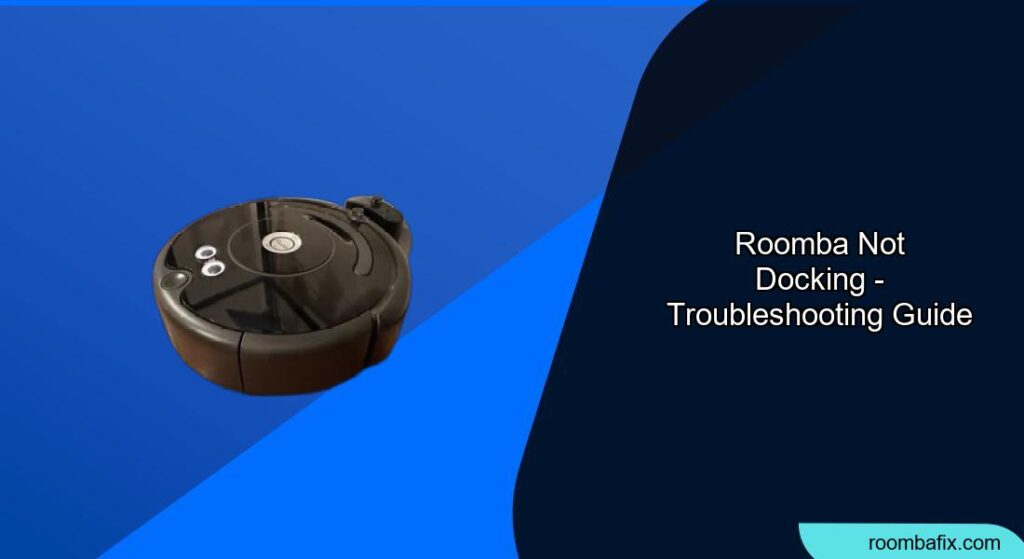Is your Roomba refusing to return to its base? It’s a common frustration, disrupting your cleaning schedule and leaving your robot vacuum stranded. This article will explore the reasons why your Roomba isn’t docking and provide step-by-step solutions to get it back on track, ensuring your home stays clean with minimal effort.
A Roomba that won’t dock can be caused by various factors, from simple placement issues to more complex sensor problems. This guide addresses the common culprits, offering practical advice and easy-to-follow instructions to diagnose and fix the issue. By understanding the potential causes and implementing the solutions outlined below, you can restore your Roomba’s docking abilities and maintain a consistently clean home. Let’s get started and bring order back to your cleaning routine.
Why Your Roomba Isn’t Docking: Common Causes

There are several reasons why your Roomba might be struggling to dock. Identifying the cause is the first step in finding a solution. Here are some of the most common culprits:
- Obstacles: Clutter around the Home Base can interfere with the Roomba’s ability to navigate and dock correctly.
- Home Base Placement: An improperly placed Home Base can confuse the Roomba, preventing it from finding its way back.
- Dirty Sensors: Dust and debris on the Roomba’s sensors can hinder its navigation, making docking difficult.
- Low Battery: If the Roomba’s battery is too low, it may not have enough power to return to the Home Base.
- Software Glitches: Sometimes, a simple software glitch can disrupt the Roomba’s normal functioning, including docking.
Optimizing Home Base Placement for Successful Docking

The placement of your Roomba’s Home Base is crucial for reliable docking. Here’s how to ensure it’s positioned correctly:
- Clear Space: Ensure there are no obstacles within 4 feet in front of the Home Base and 2 feet on either side. This clear zone allows the Roomba to approach and dock without interference.
- Hard, Level Surface: Place the Home Base on a hard, level surface, such as hardwood or tile. Avoid placing it on carpets or rugs, as this can affect its stability.
- Against a Wall: Position the Home Base against a wall to provide stability and a consistent reference point for the Roomba.
- Avoid Sunlight: Keep the Home Base away from direct sunlight, as it can interfere with the Roomba’s infrared sensors.
- Permanent Location: Once you’ve found the optimal spot, avoid moving the Home Base frequently. The Roomba learns its location and may become confused if it’s constantly moved.
Cleaning Roomba Sensors for Improved Navigation
Dirty sensors can significantly impact your Roomba’s ability to navigate and dock. Regularly cleaning the sensors is essential for optimal performance:
- What You’ll Need: A clean, dry microfiber cloth.
- Cleaning Frequency: Clean the sensors at least once a week, or more often if you have pets or live in a dusty environment.
How to Clean the Sensors:
- Turn Off the Roomba: Power off the Roomba to prevent accidental activation during cleaning.
- Locate the Sensors: The sensors are located on the bottom and front bumper of the Roomba.
- Wipe Gently: Use the microfiber cloth to gently wipe away any dust or debris from the sensors. Avoid using any liquids or cleaning solutions.
- Inspect and Repeat: Inspect the sensors to ensure they are clean. Repeat the process if necessary.
- Power On: Once the sensors are clean and dry, power the Roomba back on.
Restarting Your Roomba: A Simple Fix for Docking Issues
Sometimes, a simple restart can resolve software glitches that prevent your Roomba from docking:
- Locate the “Clean” Button: This is the large button on the top of your Roomba.
- Press and Hold: Press and hold the “Clean” button for approximately 20 seconds.
- Listen for the Tone: After 20 seconds, the Roomba should play a restart tone.
- Release the Button: Release the “Clean” button.
- Allow to Reboot: The Roomba will now reboot. This may take a few moments.
- Test Docking: Once the Roomba has restarted, try sending it back to the Home Base to see if it docks successfully.
Battery Health and Its Impact on Roomba Docking

A Roomba with a weak or dying battery may not have enough power to return to the Home Base. Here’s what you should know:
- Check Battery Health: Most Roomba models have a battery indicator light. If the light is flashing red or orange, the battery is low.
- Allow Full Charge: Ensure the Roomba is allowed to fully charge before each cleaning cycle.
- Replace Battery: If your Roomba is old or the battery life has significantly decreased, consider replacing the battery.
- Optimize Cleaning Area: if your Roomba has a small battery, try to reduce the size of the cleaning area, so that the Roomba doesn’t run out of power before making it back to the dock.
Troubleshooting Roomba Docking Problems
Even after addressing the common causes, your Roomba might still have trouble docking. Here are some troubleshooting tips:
- Roomba spins in circles near the base: This is often a sign that the IR sensor is dirty or that the base is not positioned correctly.
- Roomba docks, but then undocks shortly after: This usually means that the charging contacts are dirty, or that the Roomba is not making good contact with the base.
- Roomba gets close to the base, but never docks: This could be due to an obstruction near the base or a software glitch.
Roomba Docking: Tips, Warnings, and Best Practices
- Regular Maintenance: Regular cleaning and maintenance are key to preventing docking issues.
- Avoid Obstacles: Keep the cleaning area free of clutter and obstacles.
- Monitor Battery Health: Keep an eye on the Roomba’s battery health and replace it when necessary.
- Firmware Updates: Ensure your Roomba has the latest firmware updates installed. These updates often include bug fixes and performance improvements.
- Don’t move the Roomba: Avoid picking up the Roomba and manually placing it on the base, as this can confuse its navigation system.
FAQ
Why is my Roomba going near the base but not docking?
The Roomba might approach the base but fail to dock due to several reasons. Common causes include a dirty infrared (IR) sensor, an obstruction near the base, or the base not being flush against the wall. Ensure the IR sensor is clean, remove any obstacles within a few feet of the base, and confirm the base is properly positioned.
How do I reset my Roomba if it won’t dock?
To reset your Roomba, press and hold the “Clean” button for about 20 seconds. This will restart the Roomba and can resolve minor software glitches that may be preventing it from docking. After the reset, allow the Roomba to reboot and then try sending it back to the Home Base.
What is the ideal placement for the Roomba Home Base?
The ideal placement for the Home Base is on a hard, level surface against a wall, with at least 4 feet of clear space in front and 2 feet on each side. Avoid placing it in direct sunlight or near cluttered areas, as these can interfere with the Roomba’s navigation and docking abilities.
How often should I clean the Roomba sensors to ensure proper docking?
You should clean the Roomba’s sensors at least once a week to ensure proper docking. If you have pets or live in a dusty environment, consider cleaning them more frequently. Use a clean, dry microfiber cloth to gently wipe away any dust or debris from the sensors.
Conclusion
A Roomba that refuses to dock can be a frustrating problem, but with the right troubleshooting steps, it’s often easily resolved. By ensuring proper Home Base placement, regularly cleaning the sensors, and addressing any battery issues, you can keep your Roomba docking reliably and maintaining a clean home.
Remember to perform regular maintenance and keep the cleaning area free of obstacles to ensure optimal performance. With these tips, your Roomba will be back on track, keeping your floors clean and your life easier.

